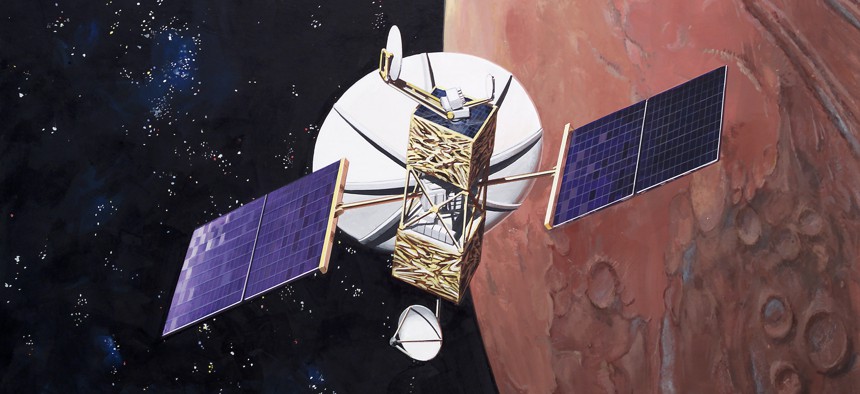Hypersonic missile-tracking satellites greenlit for development

Communications satellite. NASA
The Space Development Agency awarded L3Harris and Northrop Grumman $1.3 billion in contracts to deliver prototypes that track quick-maneuvering hypersonic missiles in flight.
Two companies will build 28 satellite prototypes with enhanced missile-tracking abilities—and the promise of being able to keep up with next-generation hypersonics—after a $1.3 billion award, defense officials announced Monday.
The Space Development Agency awarded Northrop Grumman and L3Harris contracts worth approximately $617 million and $700 million, respectively, to build the tracking layers for satellite constellations with missile warning and tracking abilities.
The “other transaction awards,” which also include segments for launch services and ground operations and sustainment, are part of a longer term plan to field new satellites in low- and medium-earth orbit that would improve the sharing of missile target data.
Each company is slated to build 14 satellites “to collect infrared data and provide network communications” for continuous missile detection, warning, tracking, and identification worldwide, according to a news release. The tracking layer works in tandem with the transport layer’s mesh communication network of satellites in low-Earth orbit–which can continue to function even if some parts are damaged or destroyed—and can handle conventional and advanced missile tracking.
Current missile tracking abilities are limited in that regard and largely designed to warn based on an initial launch.
“The satellites that we're going to be launching and fielding can do that complete missile warning and missile tracking around the globe for as many missiles as could be launched against us,” Derek Tournear, the director of the Space Development Agency, which is charged with fielding new satellite capabilities, told reporters Monday.
Additionally, he said, missiles are now being developed with the ability to launch on rockets and maneuver at hypersonic speeds once in flight, which make it harder to predict where they will land.
“So that if I see where the missile is going, and I try to predict where it's going just based on [Newton’s second law of motion] and the ballistic trajectory, I will not be able to predict where it's going to land, because it's going to maneuver significantly.”
And as the space environment has grown more contested, so has the need for new approaches.
“The environment in space has changed,” he said. “We had to completely change the way that we do our space architecture. So the space architecture now is designed to be more resilient based on proliferation.”
That means having hundreds of satellites in low-Earth orbit, plus a second set of satellites in medium-Earth orbit to “provide a more resilient backup for the missile warning missile tracking,” Tournear said.
The satellites are designed with improved cyber capabilities to combat common mode failures.
“We worry a lot about cyber attacks. We worry a lot about supply chain interdiction. So we have a lot of protections in place to harden our cyber position and to validate and verify the provenance of our supply chain. But those are really the main things that we're concerned about,” he said.
The SDA will launch its first tranche of satellites, called Tranche 0, in 10 weeks, Tournear said. The second one, Tranche 1, aims to build on the previous one’s capabilities—such as targeted technology enhancements, improved coverage and integration, and calibration—and is scheduled to begin data transport and communications launches in September 2024. By early 2025, the tracking constellation, which the billion-dollar award is for, will follow.






